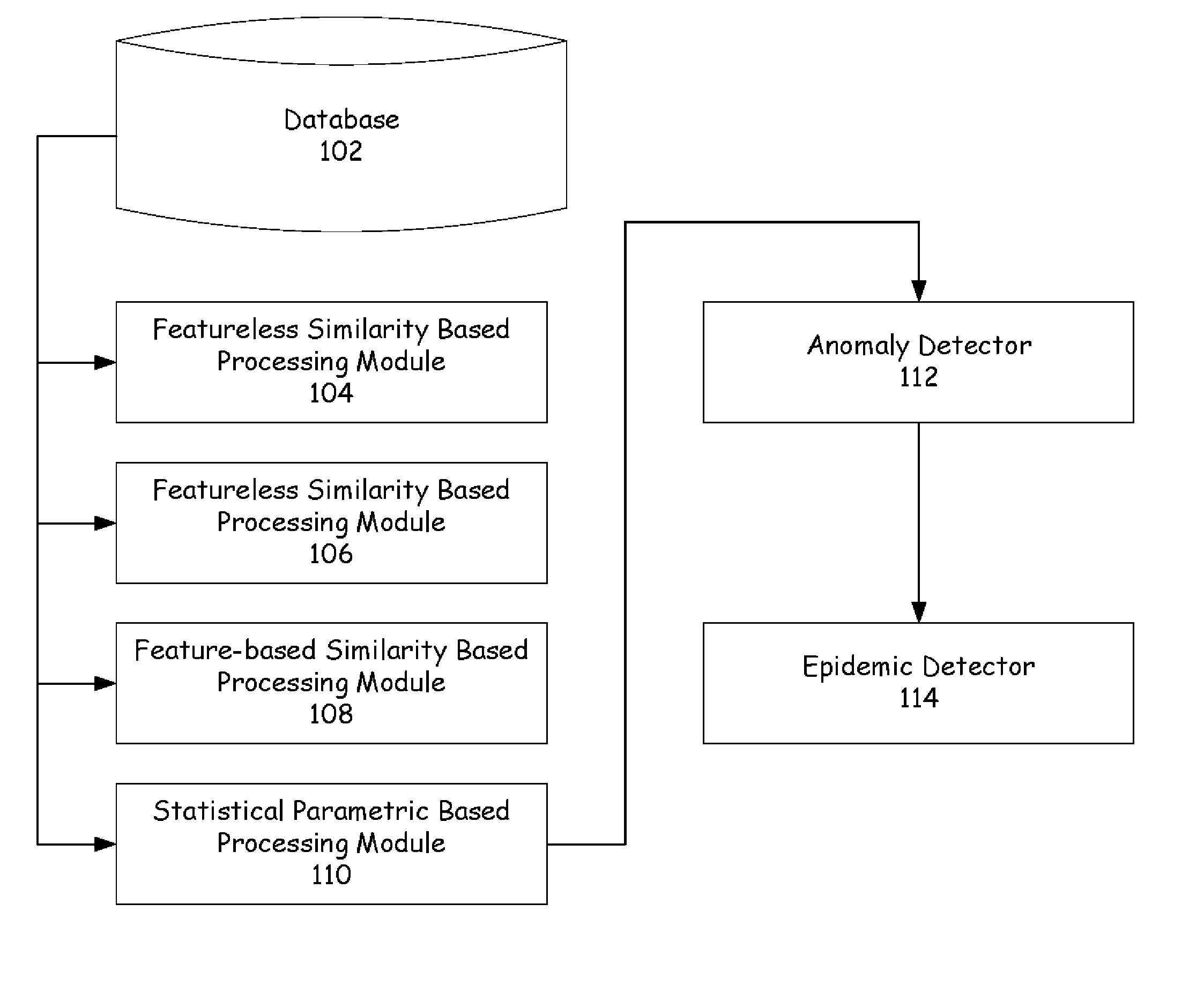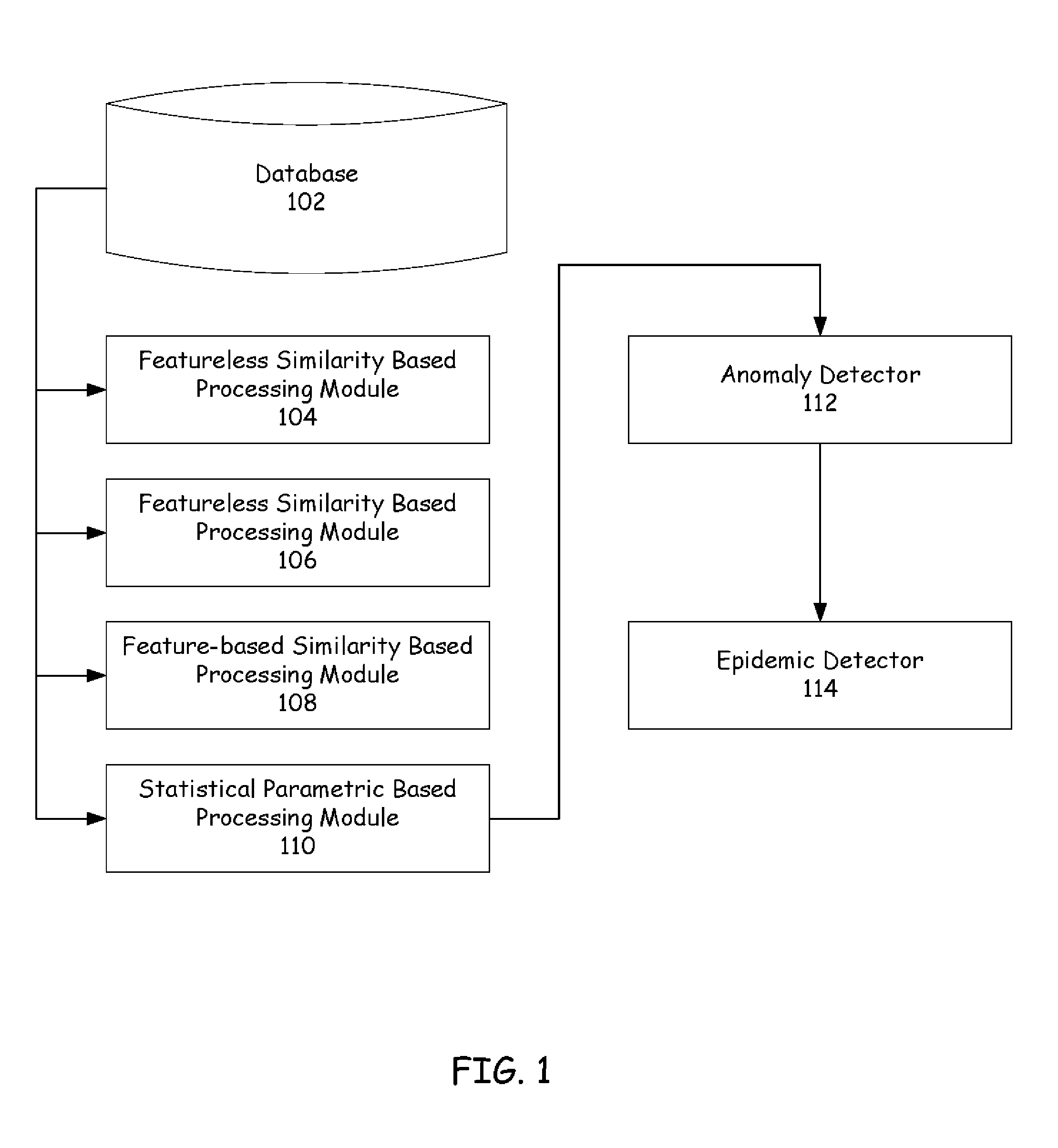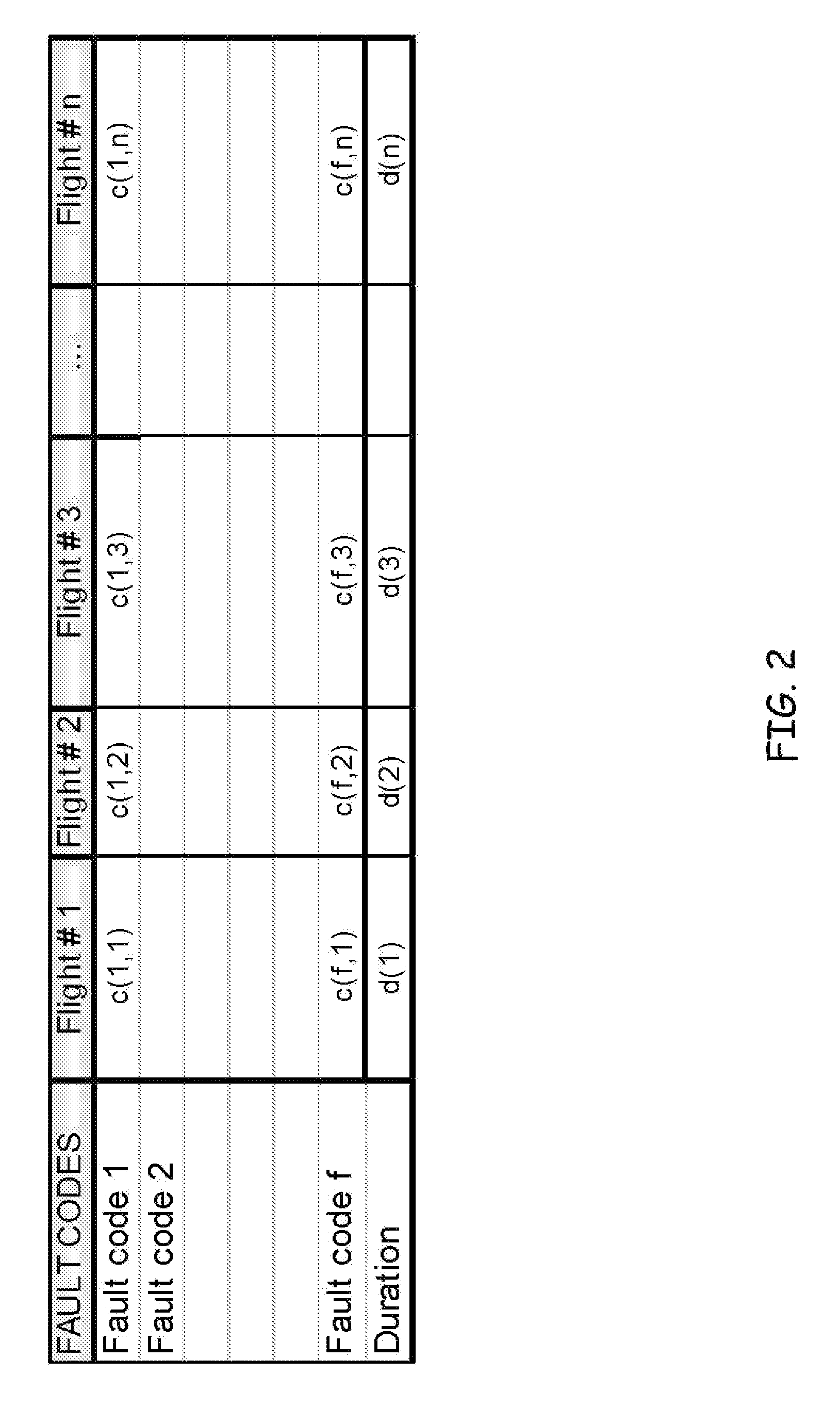System and method for defining normal operating regions and identifying anomalous behavior of units within a fleet, operating in a complex, dynamic environment
a technology of applied in the field of system and method for defining normal operating region and anomalous behavior of units within a fleet, can solve problems such as no starting point, and achieve the effect of reducing the number of anomalous units
- Summary
- Abstract
- Description
- Claims
- Application Information
AI Technical Summary
Problems solved by technology
Method used
Image
Examples
Embodiment Construction
[0019] Preferred embodiments of the present invention are illustrated in the Figs., like numerals being used to refer to like and corresponding parts of the various drawings.
[0020] Embodiments of the present invention pertain to the use of complexity metrics to define regions of normal and abnormal operational behavior among a fleet of dynamic systems (herein referred to as units). Specifically, embodiments may describe a method and system for defining a featureless similarity among units of a fleet. The similarity is based on a stream of information, such as the real-time collection of unit-related events in an event log.
[0021] This information can then be used to compute pairwise dissimilarities, which will determine the degree to which one unit's behavior differs from another, strictly based on the generation of event messages. An N-dimensional vector composed of the pairwise differences between a unit and all other ones. one can track these N-dimensional vectors over time, pro...
PUM
 Login to View More
Login to View More Abstract
Description
Claims
Application Information
 Login to View More
Login to View More - R&D
- Intellectual Property
- Life Sciences
- Materials
- Tech Scout
- Unparalleled Data Quality
- Higher Quality Content
- 60% Fewer Hallucinations
Browse by: Latest US Patents, China's latest patents, Technical Efficacy Thesaurus, Application Domain, Technology Topic, Popular Technical Reports.
© 2025 PatSnap. All rights reserved.Legal|Privacy policy|Modern Slavery Act Transparency Statement|Sitemap|About US| Contact US: help@patsnap.com



